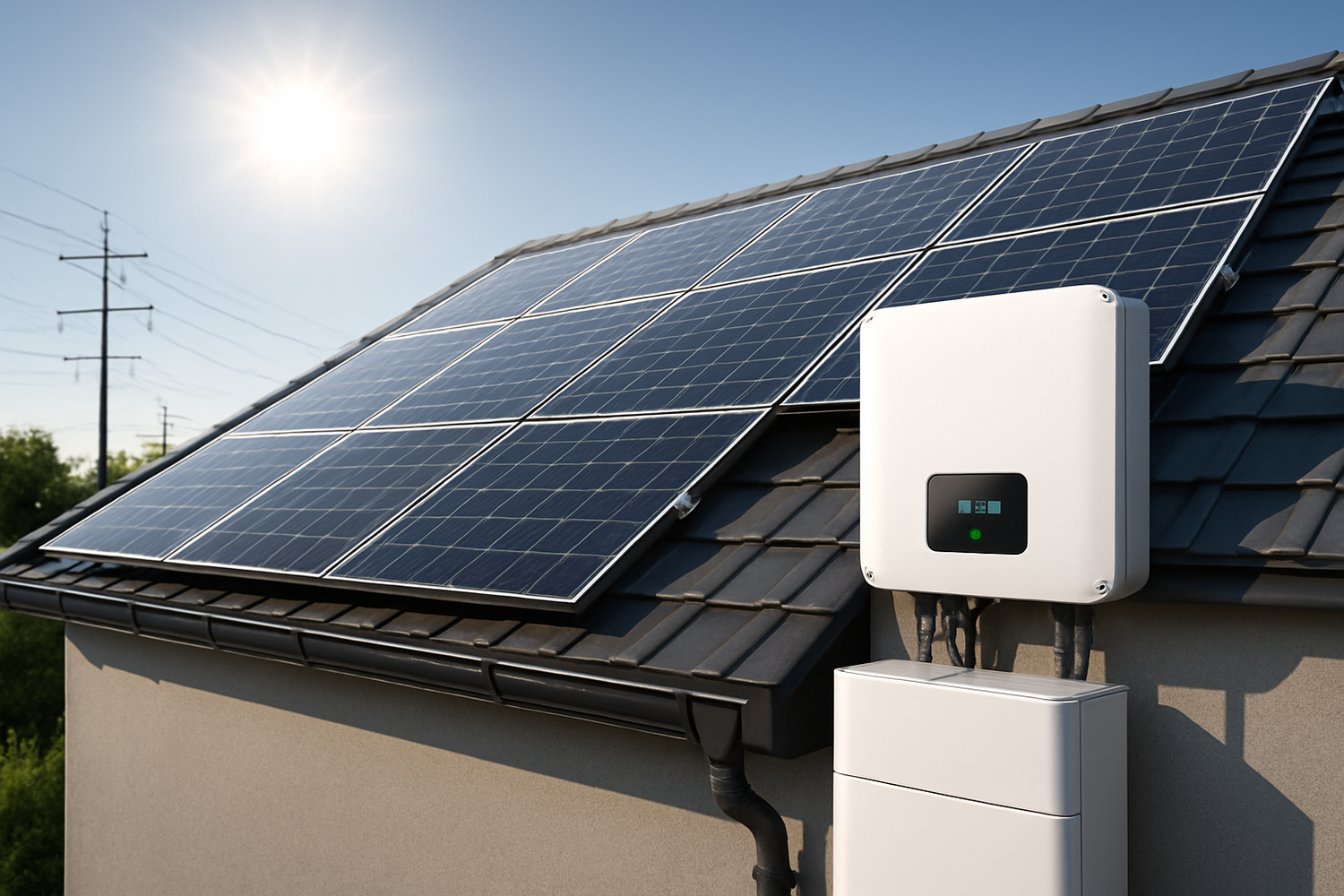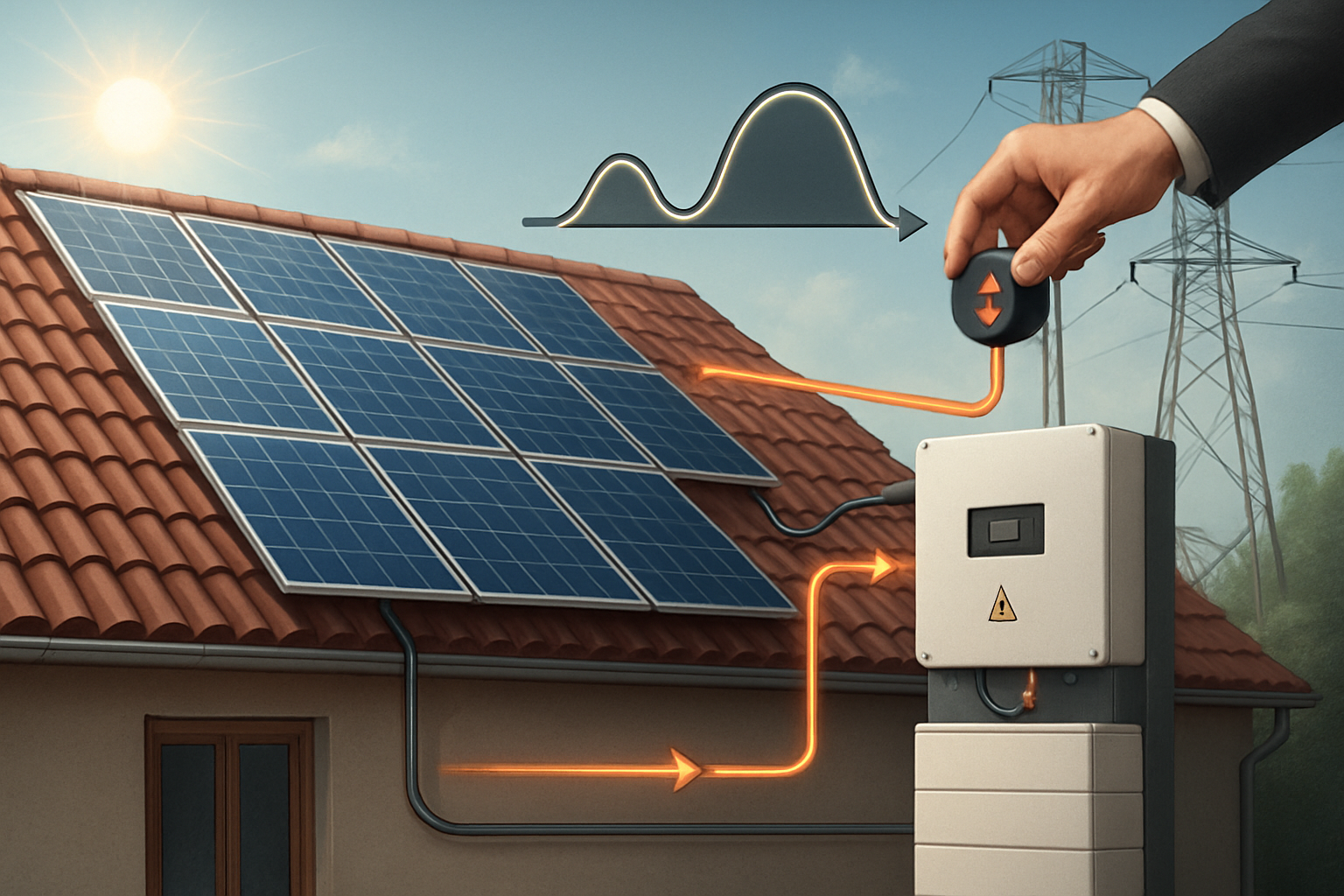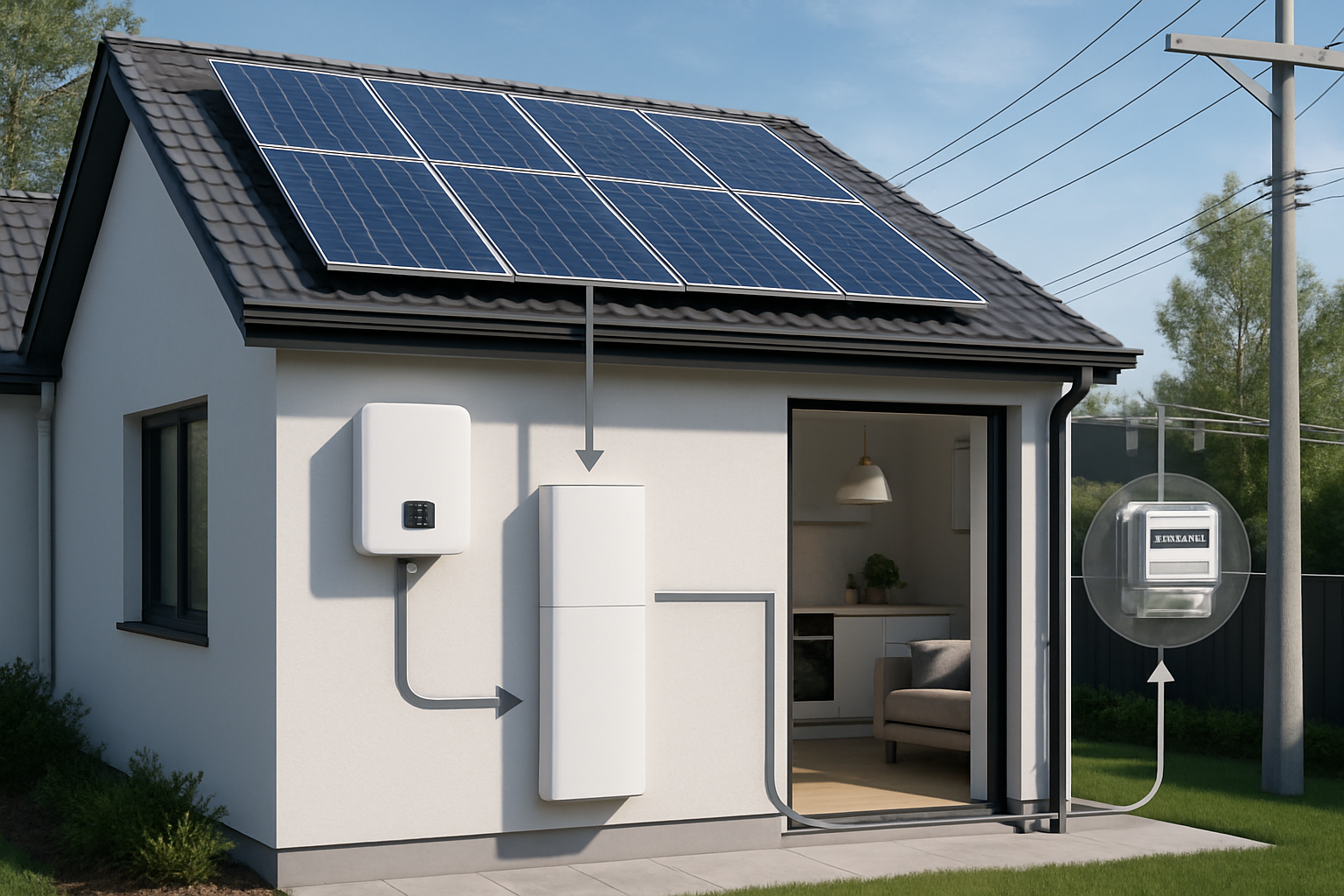Rooftop solar panels offer a powerful path to energy independence, yet a significant challenge can limit their full potential: solar curtailment. This occurs when your solar system generates more electricity than the grid can absorb or your home can use, leading to wasted clean energy. Grid-forming hybrid inverters, paired with advanced energy storage, offer a robust solution, transforming how homes interact with the grid and ensuring you capture every ray of sunshine.

Understanding Rooftop Solar Curtailment
What is Curtailment and Why Does it Happen?
Solar curtailment refers to the intentional reduction of electricity generation from solar panels, even when they are capable of producing more power. This happens for several reasons, primarily related to grid capacity and economic factors. When there is an oversupply of solar energy, or when the grid infrastructure cannot handle the volume of power produced, grid operators may instruct systems to reduce their output to maintain stability and prevent overloading.
For homeowners, this means that during periods of high solar production and low demand, the excess energy you generate might not be used or exported. This can lead to lost revenue from feed-in tariffs and reduced overall efficiency of your solar investment. Grid connection delays and network congestion are increasingly limiting the deployment of renewables.
Impacts on Solar Owners
The direct impact of curtailment on solar owners is clear: wasted renewable energy and lost financial benefits. When your panels are forced to produce less, you miss opportunities to power your home, charge your battery, or export surplus electricity for credits. This inefficiency undermines the full potential of solar power, forcing increased reliance on non-renewable sources during periods when solar generation drops.
Some regions even experience negative electricity prices, where exporting excess solar energy can result in additional costs for homeowners. This highlights the need for effective solutions to manage solar output and maximize its value.
The Role of Energy Storage in Solar Integration
How Storage Mitigates Curtailment
Energy storage provides a direct way to mitigate curtailment by capturing surplus solar energy for later use. Instead of reducing production when supply exceeds demand, excess energy is stored in batteries. This stored energy can then be discharged during periods of low generation, such as at night or on cloudy days, or during peak demand when electricity prices are higher.
Co-locating storage with renewables is proving to be a key enabler for accelerating renewable deployment as grid modernization efforts advance. Battery storage systems (BESS) have seen significant price reductions, with utility-scale BESS costs falling by 93% since 2010, reaching USD 192/kWh in 2024.
Lithium Iron Phosphate (LiFePO4) Batteries
Lithium Iron Phosphate (LiFePO4) batteries have emerged as a leading choice for home energy storage due to their exceptional safety, efficiency, and longevity. These batteries offer high energy efficiency, with some achieving up to 95% efficiency in energy transfer. Their stable chemical structure makes them less prone to overheating, reducing the risk of thermal runaway compared to other lithium-ion chemistries.
LiFePO4 batteries can endure thousands of charge-discharge cycles, offering a significantly longer lifespan. They also tolerate overcharging and over-discharging well, further enhancing their reliability and reducing safety hazards. These characteristics make LiFePO4 batteries a reliable and sustainable option for managing solar energy and achieving energy independence.
Grid-Forming Hybrid Inverter Technology
What are Grid-Forming Inverters?
Inverters are crucial devices that convert the direct current (DC) electricity from solar panels into alternating current (AC) electricity for home use or grid export. Traditionally, most inverters are “grid-following,” meaning they synchronize with and react to an existing grid signal. Grid-forming inverters, in contrast, actively create and regulate their own voltage and frequency reference.
This fundamental difference allows grid-forming inverters to operate independently, even during grid outages, and to establish their own stable electrical grid. They can mimic the behavior of traditional synchronous generators, providing essential grid services.
Benefits for Solar Owners and the Grid
Grid-forming hybrid inverters offer substantial benefits:
- Enhanced Grid Stability and Resilience: They contribute to grid stability by providing voltage and frequency support, crucial for managing the intermittent nature of renewable energy sources. They can respond to fluctuations within milliseconds, correcting imbalances that might lead to blackouts.
- Black Start Capability: A critical feature is their ability to restart a power grid after a blackout without relying on external power sources. This significantly improves grid resilience, especially in microgrids or isolated networks.
- Islanded Operation: These inverters enable microgrids to operate independently from the main grid, providing reliable power to local communities or critical infrastructure during outages.
- Reduced Curtailment: By actively managing power flow and coordinating with energy storage, grid-forming hybrids ensure that excess solar generation is stored and used, rather than curtailed.
- Higher Renewable Penetration: They facilitate the integration of more solar and wind energy into the grid by providing necessary stability services.
The U.S. Department of Energy Solar Energy Technologies Office (SETO) recognizes grid-forming inverters as an enabling technology for a decarbonized grid, capable of providing system support functions for high penetrations of inverter-based resources.
Grid-Following vs. Grid-Forming Inverters: A Comparison
| Feature | Grid-Following Inverter | Grid-Forming Inverter |
|---|---|---|
| Grid Dependence | Requires an existing stable grid signal (voltage and frequency) to operate. | Can establish and regulate its own voltage and frequency, operating independently. |
| Control Strategy | Current-controlled; injects current based on grid reference. | Voltage-controlled; actively creates voltage and frequency reference. |
| Grid Services | Limited grid support; passive responder. | Provides active voltage and frequency support, synthetic inertia, black start, islanding. |
| Resilience | Cannot operate during grid outages or blackouts. | Enables black start and islanded operation, enhancing resilience. |
| Complexity/Cost | Generally simpler and less expensive. | More complex and typically higher upfront cost, but offers greater long-term benefits. |
Implementing Future-Ready Solutions
Integrating Hybrid Inverters with Storage
Integrating grid-forming hybrid inverters with energy storage systems is a strategic approach to maximize solar energy utilization. Hybrid inverters intelligently manage power flow, prioritizing real-time usage, diverting surplus energy to battery storage, and exporting to the grid only when beneficial. This smart energy management not only reduces curtailment but also lowers electricity bills and increases energy independence.
Proper system sizing, including matching inverter capacity to your PV array and expected loads, is crucial for optimal performance and curtailment reduction. Advanced home energy management systems (HEMS) can further optimize energy consumption by prioritizing usage when solar power is abundant, for example, by scheduling electric vehicles or heat pumps to operate during peak solar generation.
Policy and Regulatory Considerations
While technological advancements are key, supportive policies and regulatory frameworks are also essential for accelerating the deployment of grid-forming solutions. Governments and stakeholders are working to improve grid preparedness, accelerate permitting, and promote flexible resources to better integrate renewables. The International Energy Agency (IEA) emphasizes that strategic government action, enhanced infrastructure, and regulatory reforms are necessary for the successful large-scale integration of solar PV and wind.
Disclaimer: This content provides general technical information and should not be considered legal or investment advice. Always consult with qualified professionals for specific guidance.
Empowering Energy Independence
The journey towards a sustainable energy future requires innovative solutions that address the evolving challenges of renewable energy integration. Grid-forming hybrid inverters, combined with reliable energy storage, represent a significant leap forward in managing rooftop solar output effectively. By embracing these future-ready technologies, homeowners can reduce curtailment, enhance grid stability, and move closer to true energy independence. This approach ensures that your investment in solar energy delivers its full potential, contributing to a more resilient and decarbonized energy system.
Frequently Asked Questions
What is rooftop solar curtailment?
Rooftop solar curtailment is when your solar panels generate more electricity than the local grid or your home can use, leading to the intentional reduction of your system's output to prevent grid overload or instability. This means some of your potential solar energy goes unused.
How do hybrid inverters help reduce curtailment?
Hybrid inverters integrate solar panels, battery storage, and the grid into one system. They intelligently divert excess solar energy to batteries for later use, rather than letting it be curtailed. This maximizes self-consumption and reduces the amount of surplus energy sent to an already constrained grid.
What are grid-forming capabilities?
Grid-forming capabilities allow an inverter to establish and maintain a stable electrical grid independently, without relying on an existing grid signal. This includes providing voltage and frequency support, enabling black start functionality (restarting the grid after an outage), and supporting islanded operation for microgrids.
Is energy storage necessary with a grid-forming hybrid inverter?
While a grid-forming hybrid inverter can operate without storage in some scenarios, pairing it with energy storage, such as LiFePO4 batteries, significantly enhances its ability to mitigate curtailment, provide grid services, and ensure continuous power during outages. Storage allows you to capture and utilize all your generated solar power.





Leave a comment
All comments are moderated before being published.
This site is protected by hCaptcha and the hCaptcha Privacy Policy and Terms of Service apply.